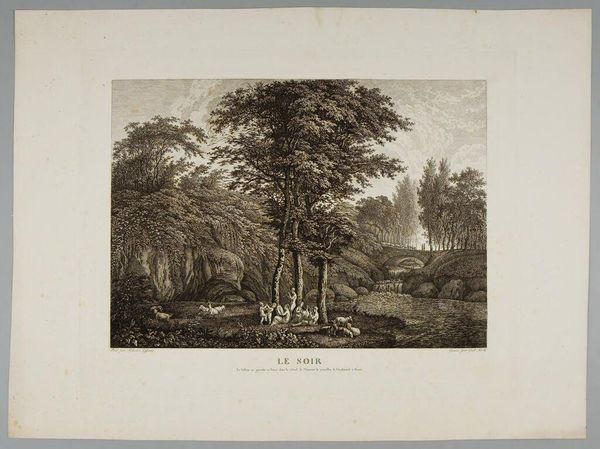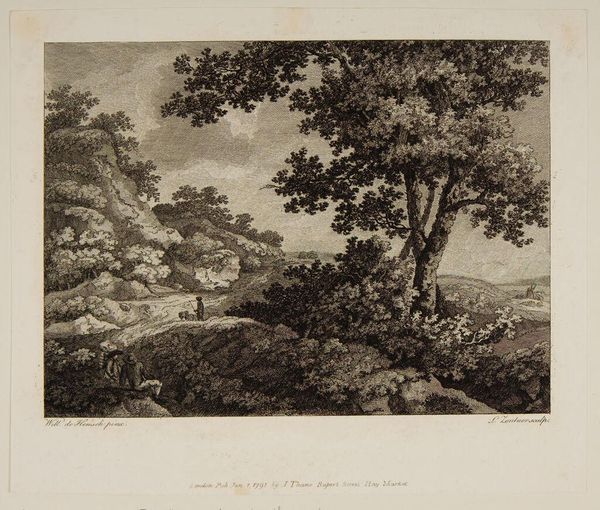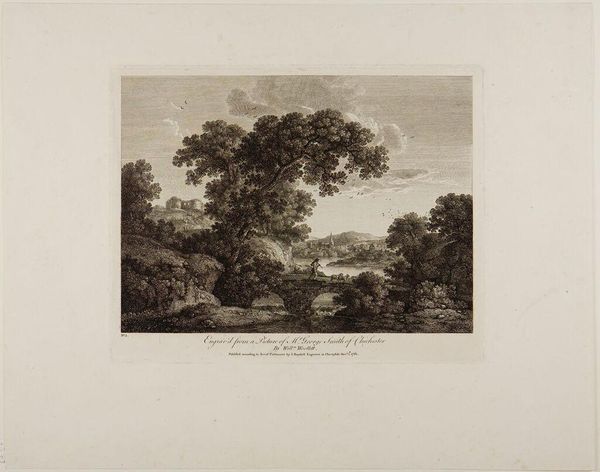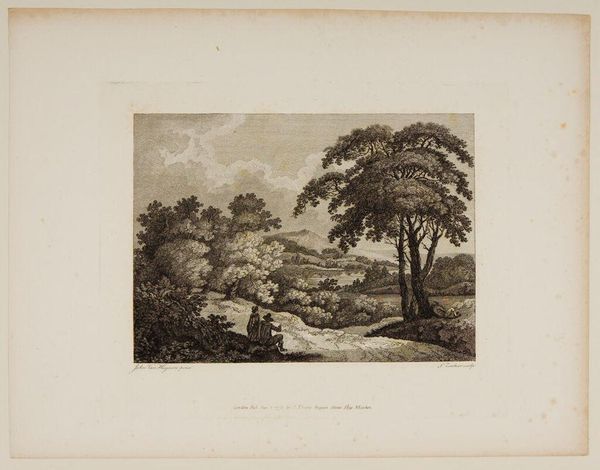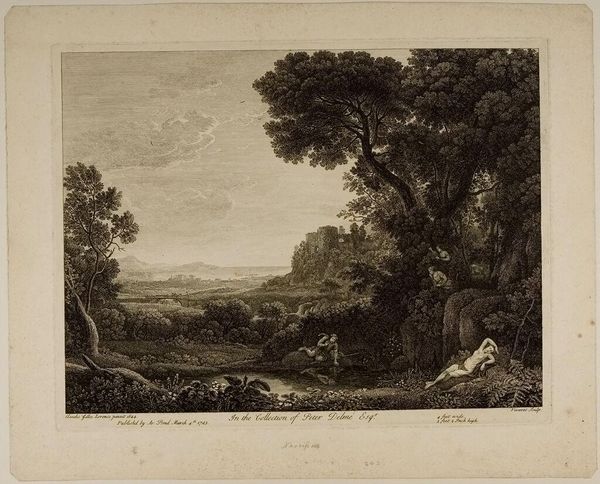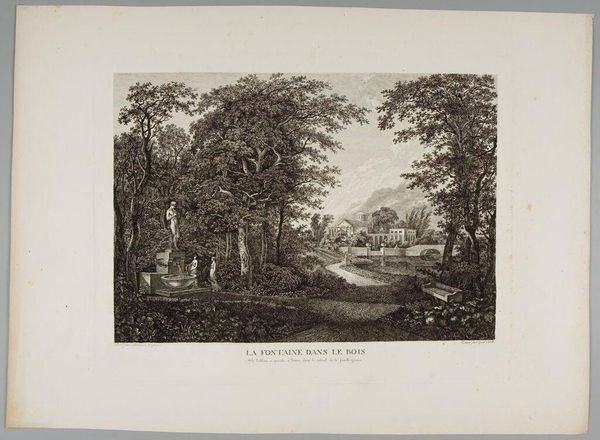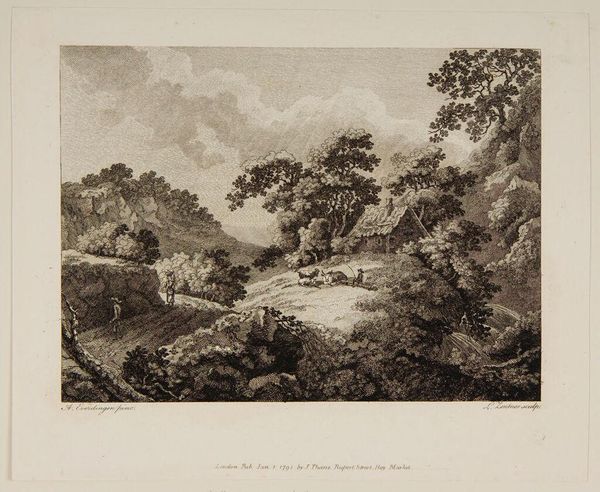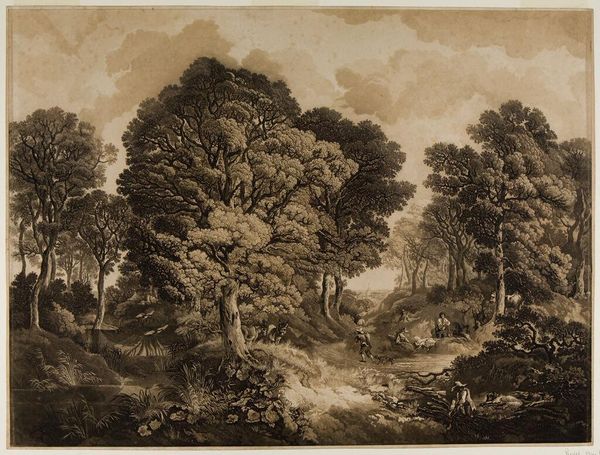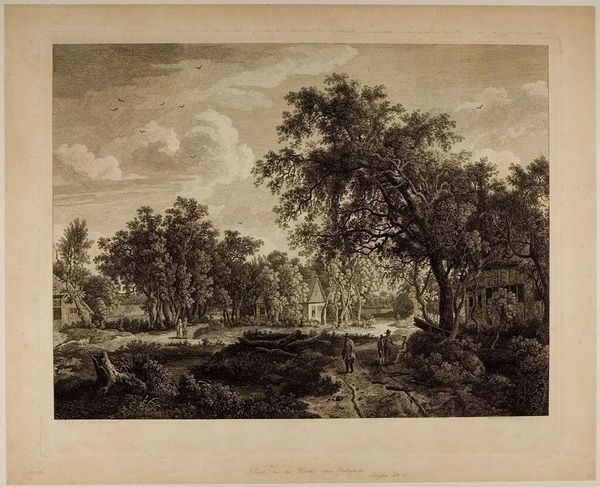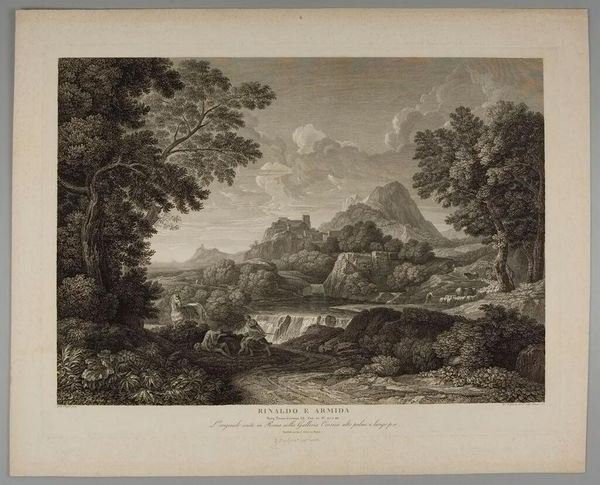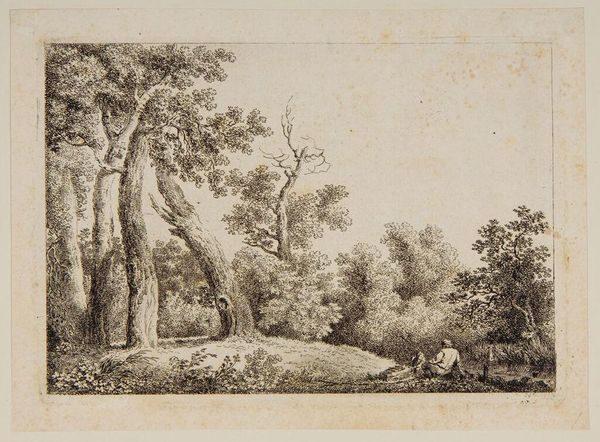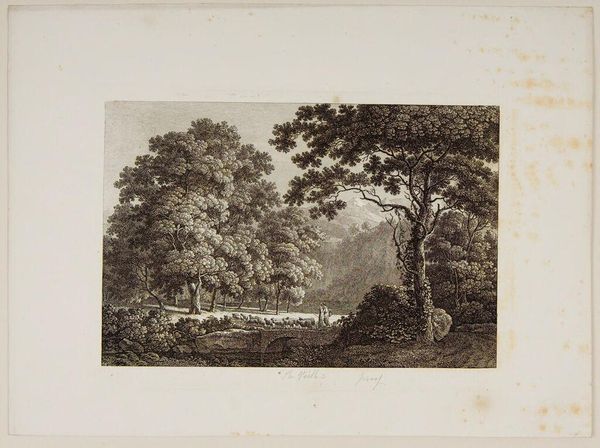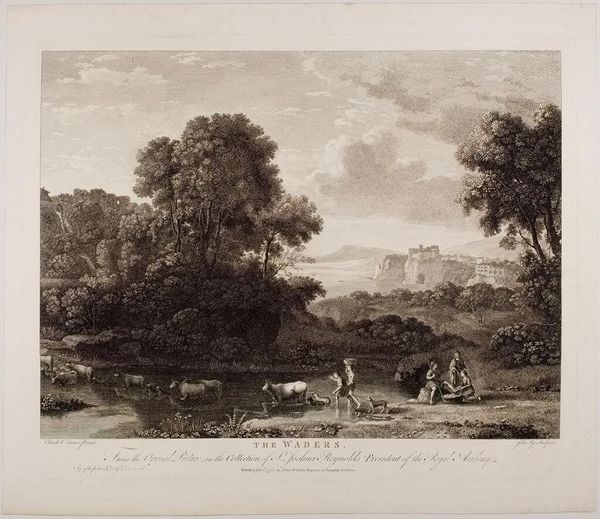
Copyright: CC0 1.0
Editor: This is "Wood near the Hague" by Carl Wilhelm Weisbrod, held at the Harvard Art Museums. It's a detailed landscape scene, almost like a snapshot of everyday life. What can you tell me about its historical context? Curator: This print likely reflects the 18th-century aristocratic appreciation for landscape. Consider the prominent inscription dedicating the piece to the Duc de Praslin. How might this dedication shape our understanding of the work's purpose and reception? Editor: Maybe it suggests the image was commissioned to showcase the Duke's refined taste and appreciation for nature? Curator: Precisely! The scene, seemingly simple, is carefully constructed to convey a sense of cultivated leisure and ownership. It speaks to the power and privilege associated with the land, and how art served to reinforce such social structures. Editor: I never thought about landscape as a form of social commentary before. That's really insightful! Curator: Art often reflects more than meets the eye. Understanding its historical context unveils deeper meanings.
Comments
No comments
Be the first to comment and join the conversation on the ultimate creative platform.
